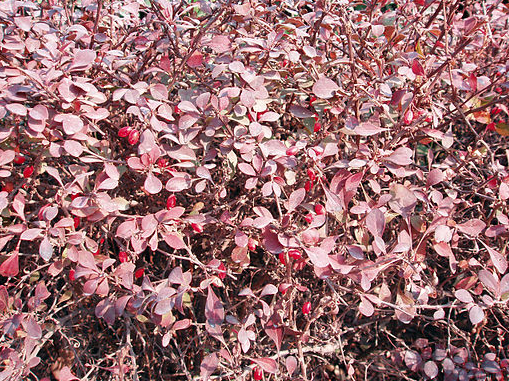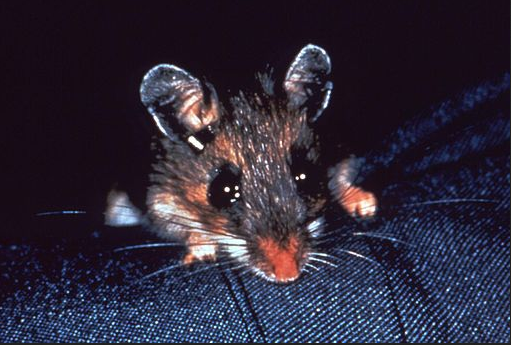When a well-known ornamental of long standing use appears on the list of invasive plants, often our first reaction is along the lines of “No way!” If it’s in our own yards, perhaps installed as part of a neat landscaping plan, we’re reluctant to take steps because it’s so intrinsic to the manicured look of a low maintenance scheme. So, maybe we just leave it…
One of these plants in the bulls-eye of environmentalists is Barberry–especially Berberis thunbergii. You’ve seen it in various forms–especially the purple or golden varieties. You can find different cultivars for sale in almost any garden center/nursery. Let’s look more closely at Berberis.
There is a native barberry–Berberis canadensis, which spreads by rhizomes in dry open conditions. Primarily an eastern plant, native Americans like the Cherokee used the juicy red berries for food (high in vitamin C) and medicine. European colonists brought with them Berberis vulgaris, which produced a tart berry used for jams and wine, a yellow dye, wood for axe handles and could be utilized for animal containment hedges. Like many colonial imports, it escaped cultivation and naturalized throughout the areas as they were settled and in woods and fields. Unfortunately, there also exists a strong affinity between these two Berberis sp. and a particular fungus (Puccinia graminis). This fungus, “stem rust”, was one of the most feared diseases of our cereal crops like wheat and oats–we now plant resistant cultivars to foil it. Stem rust requires to unrelated hosts, like a Barberry plant (the worst type of host with most persistence of infection) and a wheat plant to complete its life cycle. The stem rust fungus interferes with the uptake of nutrients by the cereal plant so that the grains shrivel, other pathogens can weaken the plant and it can “lodge” or fall over. Rust has been a serious problem since ancient times and a cause of famines. The relationship between the spread of rust and barberry had been suspected since the 1600’s with prohibitions against barberry being near grain fields. In the United States, the spread of Berberis vulgaris was a contributor to the massive grain failure of 1916. With scientific evidence of the link between the two hosts and concerns about World War I food scarcity an all out effort was launched to eradicate these two species.
Meanwhile, in the 1860’s, with the opening of Japan to trade, another species of Barberry was introduced –the Japanese barberry, Berberis thunbergii, which happens to be immune to stem rust infection. Therefore, this species did not suffer the same mass shovel pruning of the others and survived in the burgeoning landscape trade of the 20th century with many new cultivars.
This species is mostly terrifically prolific and highly adaptable to sun and shade and is now the most dominant invasive plant found in hundreds of miles of surveyed trails in New England. The main issue is that Barberries change the chemical composition of soil in which they grow. They contain a high number of alkaloids which being nitrogen-rich quickly burn through the organic material in the soil around them. Even a tiny amount of barberry detritis can alter the soil to make it inhospitable for all but weedy plants adapted to poor soils. Even grubbing out the barberries and substituting native plants has been unsuccessful since the natives are slow growing and are out-competed by the weeds that barberry “infected” soil prefers to grow.
Second, barberries are often a go-to planting where deer are a problem. The thorniness and possibly the alkaloids hinder browsing. However, a strong relationship has been found between tick infestations and barberries. It seems that deer ticks like to spend their early nymphal stages on the White-footed Mouse which seeks shelter from predators in…you guessed it–Japanese barberry. There are four times more Lyme disease carrying ticks found where barberries are concentrated. Getting rid of the barberries majorly impacts the number of ticks found.
There is an attempt to produce sterile plants, since the main source of spread is birds feeding on the berries, but among the cultivars in the trade and crosses occurring in the wild, the seeds amounts produced can be astonishing. If a sterile plant can be produced, it would certainly help but will do little to prevent the tick problems in suburban areas near woods where deer come into homeowner yards to feed.




